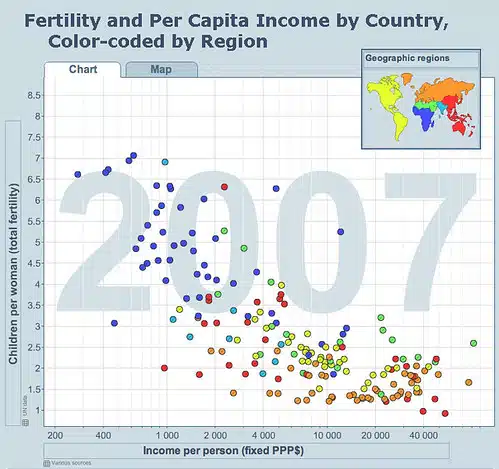Maintaining a healthy and lush lawn is a top priority for many homeowners, but achieving this goal requires more than just regular mowing and watering. Fertilization plays a crucial role in providing the necessary nutrients and promoting strong root growth, which ultimately leads to a vibrant and resilient lawn. However, determining how often to fertilize can be challenging, as it depends on various factors such as soil type, grass species, weather conditions, and the specific fertilizer used.
As a lawn care expert with years of experience in the field, I understand the importance of proper fertilization practices for achieving optimal results. In this article, we will explore the different variables that influence how often you should fertilize your lawn, including the type of grass you have and its growth rate, soil pH levels, and seasonal changes. By following these guidelines and implementing an effective fertilization schedule tailored to your lawn’s needs, you can ensure that your yard remains healthy and vibrant year-round.
Understanding The Benefits Of Fertilization For Your Lawn
Fertilizing your lawn is an important aspect of maintaining its health and beauty. Proper fertilization provides essential nutrients that promote growth, improve color, and enhance the overall appearance of your lawn. However, it is essential to understand the benefits and drawbacks of fertilization to ensure that you provide your lawn with the appropriate care it needs.
One of the benefits of fertilizing your lawn is that it promotes root growth, which makes them more resilient to drought and other environmental stressors. Additionally, a well-fertilized lawn can prevent weed growth by creating a thick and dense grass cover. It also helps in reducing soil erosion by increasing the turf’s root system density.
However, overuse or misuse of fertilizer can lead to excessive growth, weakening of roots, or even death of grass plants. Moreover, improper timing for fertilization can result in nutrient loss due to evaporation or runoff before they are absorbed by the roots. Therefore, proper timing for fertilization is crucial for maximizing its benefits while minimizing potential drawbacks.
Factors such as soil type, grass species, climate conditions should be taken into account when deciding on the frequency of fertilization. In the next section, we will discuss these factors in detail and how they affect your lawn’s need for fertilizer application.
Factors That Affect Fertilization Frequency
- Soil type is an important factor to consider when determining how often to fertilize a lawn. Depending on the composition of the soil, more or less frequent fertilization may be required.
- Different types of grasses require different levels of fertilization, so the type of grass should be taken into account when deciding on a fertilization frequency.
- Watering habits also play a role in lawn fertilization; lawns that are watered frequently may require more frequent fertilization than lawns that receive less frequent watering.
- Additionally, soil types and grass types vary in their requirements for fertilization, so an individualized fertilization plan should be established to ensure optimal lawn health.
- Once the soil type, grass type, and watering habits have been taken into account, a tailored fertilization schedule can be developed to meet the specific needs of the lawn.
- With the right combination of soil type, grass type, and watering habits, the frequency of fertilization can be adjusted to ensure a healthy and thriving lawn.
Soil Type
When it comes to lawn care, fertilization is an essential aspect that affects the health and appearance of your grass. However, the frequency of fertilization largely depends on several factors such as soil type, climate, grass type, and other environmental conditions. In this article, we’ll focus on how soil type affects the frequency of fertilization.
Soil type plays a crucial role in determining the best fertilizers to use and how often you should apply them. Different types of soils have varying nutrient profiles that affect their ability to absorb nutrients from fertilizers. For instance, sandy soils tend to be well-draining but have low nutrient-holding capacity. On the other hand, clay soils are dense and retain more moisture but can become compacted over time, making it difficult for roots to access nutrients. Therefore, it’s important to understand your soil type and its nutrient absorption capabilities before choosing a fertilizer.
To determine how often you should fertilize based on soil type, you need to consider the nutrient requirements of your grass species and the availability of those nutrients in your soil. For example, if you have sandy soil with low nutrient-holding capacity, you may need to fertilize more frequently than someone with loamy or clayey soils since sandy soils lose their nutrients quickly through leaching. However, if you have clay soil with high nutrient retention but poor drainage properties, you may need to apply less frequent applications of slow-release fertilizers.
In conclusion, understanding your soil type and its ability to absorb nutrients is key when deciding how often to fertilize your lawn. By analyzing your lawn’s specific needs based on its location and soil composition, you can make informed decisions about which types of fertilizers are best suited for your lawn care needs. Remember that proper fertilization not only keeps your grass looking lush and healthy but also promotes root growth and overall plant health.
Grass Type
Another significant factor that affects the frequency of fertilization is the grass type. Choosing the right seed is crucial to achieving a healthy and vibrant lawn. Different grass species have varying nutrient requirements, growth rates, and tolerance to environmental stressors. Therefore, understanding your grass type is essential when determining how often you should fertilize your lawn.
For instance, warm-season grasses like Bermuda and Zoysia tend to have higher nitrogen requirements than cool-season grasses like Kentucky Bluegrass and Fescue. Warm-season grasses also have longer growing seasons and require more frequent applications of slow-release fertilizers during their peak growth periods. On the other hand, cool-season grasses require less fertilizer but benefit from fall applications to promote root growth and prepare for winter dormancy.
Best care practices for different grass types also vary depending on their specific needs. For example, some grasses may need regular aeration to improve soil compaction and allow nutrients to penetrate deeper into the soil. Others may require frequent mowing at specific heights to maintain optimal growth rates without causing damage or stress.
In summary, choosing the right seed and understanding best care practices for your particular grass type are vital aspects in determining how often you should fertilize your lawn. By analyzing your lawn’s specific needs based on its location, soil composition, and grass species, you can make informed decisions about which types of fertilizers are best suited for your lawn care needs. Remember that proper fertilization not only keeps your grass looking lush and healthy but also promotes root growth and overall plant health.
Watering Habits
Watering habits also play a crucial role in determining how often you should fertilize your lawn. Proper watering frequency is essential to ensure that the nutrients from the fertilizer are absorbed efficiently by the grass roots. Watering too frequently or too infrequently can negatively impact your lawn’s health and affect its ability to tolerate drought conditions.
For optimal results, it is recommended that you water your lawn deeply and infrequently rather than shallowly and frequently. Deep watering encourages deeper root growth, which helps improve drought tolerance and overall plant health. The ideal watering schedule may vary depending on factors such as soil type, grass species, and climate conditions.
In addition to proper watering frequency, it is also essential to consider the timing of your watering. It is generally best to water your lawn early in the morning when temperatures are cooler and evaporation rates are lower. This allows for maximum absorption of moisture by the grass roots before heat and sunlight start evaporating the water away. By incorporating these best practices into your watering habits, you can help reduce fertilizer runoff and ensure that your lawn receives the necessary nutrients for optimal health and growth.
Identifying Your Grass Type
Grass type identification is an essential aspect of maintaining a healthy lawn. Knowing the type of grass on your lawn will help you determine its maintenance requirements and ensure that you apply the appropriate care practices.
To identify your grass type, first, observe its color and texture. Grasses vary in color, ranging from light green to dark green, and have different textures, from fine to coarse blades. Second, examine the growth pattern of your grass; some grow in clumps while others spread through rhizomes or stolons.
Once you have identified your grass type, it is crucial to understand its maintenance requirements. Every grass has unique needs in terms of watering frequency, mowing height, and fertilization. Familiarizing yourself with these requirements will help you establish a proper lawn care routine that promotes optimal growth and health for your lawn.
Understanding your grass’s growth rate is the next step in maintaining a healthy lawn. Different types of grass grow at varying rates throughout the year. Warm-season grasses tend to grow faster during summer than cool-season ones that thrive better in spring and fall. It’s essential to adjust your maintenance practices accordingly based on your turfgrass’s growth rate for maximum results.
Understanding Your Grass’s Growth Rate
Just like any other plant, grass also grows at different rates depending on the species, weather, and nutrient availability. Understanding your grass’s growth rate is crucial in determining the optimal fertilization frequency. As a lawn care expert, I always recommend that homeowners fertilize their lawns based on the grass’s growth rate to ensure that it receives the right amount of nutrients to thrive.
Some types of turfgrass grow quickly and require frequent fertilization while others grow slowly and need less fertilization. For instance, Bermuda grass grows faster during summer and requires more feeding than Kentucky bluegrass or fine fescue, which have slower growth rates. Therefore, it is essential to identify your lawn’s species and understand its growth rate to determine the best time for fertilizing.
Optimal fertilization frequency varies depending on several factors such as climate, soil type, and grass species. However, most lawns require four applications annually- spring, early summer, late summer/fall, and winter- for even nutrition distribution throughout the year. Over-fertilizing can lead to quick but weak growth with increased vulnerability to pests and diseases while under-fertilizing results in thinning grass with poor coloration.
Understanding your grass’s growth rate is a critical step towards achieving a lush green lawn. Optimal fertilization frequency ensures that your lawn receives adequate nutrients throughout the year without overloading it with excessive fertilizer waste. The next step is understanding how soil types affect nutrient availability in your lawn.
Soil Types And Nutrient Availability
- Soil type is an important factor to consider when assessing nutrient availability in lawns, as different types of soils have varying levels of nutrient content.
- Nutrient availability is determined by a combination of soil type, climate, and the amount of organic matter present in the soil.
- Nutrient-rich soils require less frequent fertilizing than soils with lower levels of nutrients, so it is important to identify the type of soil in a lawn before determining a fertilizing schedule.
- For lawns with nutrient-poor soil, regular applications of fertilizer can help to ensure adequate levels of nutrients for optimal growth and health.
Soil Types
As a lawn care expert, it is important to understand the role of soil types in nutrient availability. Different soil types have different properties that affect how nutrients are held and released. For example, sandy soils tend to drain quickly and do not hold onto nutrients well, which can lead to nutrient deficiencies in plants. On the other hand, clay soils hold onto nutrients tightly but can become waterlogged and lead to root rot if overwatered.
It is important for homeowners to identify the soil type in their yard before fertilizing their lawn. Soil tests can provide valuable information about the pH level and nutrient content of the soil. This information can help homeowners determine which fertilizers are best suited for their specific soil type and prevent overfertilization or underfertilization.
Nutrient deficiencies can be a common issue for lawns grown in certain soil types. For example, iron deficiency is often found in alkaline soils with a high pH level, while potassium deficiency is more common in sandy soils with low organic matter content. By understanding these patterns, homeowners can choose fertilizers that specifically target these deficiencies and improve the overall health of their lawn.
In conclusion, understanding soil types is essential for proper lawn care and nutrient management. By identifying the soil type in your yard and targeting specific nutrient deficiencies with appropriate fertilizers, you can ensure a healthy and vibrant lawn all season long.
Nutrient Availability
Maximizing nutrient availability in the soil is crucial for maintaining a healthy and lush lawn. Soil type plays a significant role in nutrient availability, as different types of soil hold onto nutrients differently. Nutrient deficiencies are common in lawns grown in certain soil types, which can negatively impact the overall health of the lawn.
To maximize nutrient availability, homeowners should first identify the soil type in their yard. Soil tests can provide valuable information about the pH level and nutrient content of the soil. This information can help homeowners determine which fertilizers are best suited for their specific soil type and prevent overfertilization or underfertilization.
Nutrient deficiencies can be caused by various factors such as inadequate fertilization or imbalanced pH levels. Common nutrient deficiencies include iron deficiency, often found in alkaline soils with high pH levels, and potassium deficiency, more common in sandy soils with low organic matter content. By understanding these patterns, homeowners can choose fertilizers that specifically target these deficiencies and improve the overall health of their lawn.
Soil Ph Levels And Fertilizer Selection
Maintaining the right soil pH levels is vital for a lush, healthy lawn. Soil pH testing should be done before fertilizing your lawn to ensure you select the right fertilizer. The ideal pH level for grass is between 6 and 7.5, which encourages nutrient absorption and enhances root growth.
Fertilizer selection depends on whether the soil has nutrient deficiencies. The three primary nutrients required for healthy plant growth are nitrogen (N), phosphorus (P), and potassium (K). Nitrogen is essential for leafy growth, while phosphorus supports root development and flowering. Potassium boosts water absorption and disease resistance. A soil test will help determine which nutrient(s) are deficient in your lawn, allowing you to choose the appropriate fertilizer to address any deficiencies.
In summary, fertilizing your lawn without considering the soil pH level can lead to poor results. It’s essential to perform soil pH testing before applying fertilizer, as this ensures that you select the correct type of fertilizer based on nutrient deficiencies specific to your lawn. Nutrient deficiencies will vary depending on several factors such as climate or geography, so it’s always best to get expert advice when choosing a fertilizer that fits your needs best.
As we move into different seasons throughout the year, there are changes in temperature and precipitation that impact our lawns’ needs. In particular, seasonal changes can significantly affect fertilization needs because grass has different requirements during various seasons of the year; it’s essential to adapt fertilization accordingly. In the next section, we’ll discuss how these seasonal changes impact fertilization needs and what you should do to ensure your lawn stays healthy throughout the year.
Seasonal Changes And Fertilization Needs
As we discussed in the previous section, soil pH levels play a crucial role in determining the type of fertilizer that is suitable for your lawn. However, seasonal changes and weather conditions also have a significant impact on the fertilization needs of your lawn. A well-maintained lawn requires proper fertilization to ensure its health and beauty throughout the year.
During hot summer months, it is best to reduce the frequency of fertilization as dry soil and high temperatures can lead to chemical burn or damage to your grass. In contrast, during fall and spring seasons when temperatures are cooler and soil moisture levels are optimal, you should increase the frequency of fertilization to promote healthy growth. Adjusting fertilization frequency based on weather and soil moisture levels is essential in maintaining a healthy lawn.
Choosing the right fertilizer for your lawn involves more than just selecting one with adequate nutrients. High traffic areas require durable fertilizer blends that can withstand foot traffic, while shaded areas need specific formulas designed for lower light conditions. With so many options available on the market, it is important to research before purchasing a fertilizer for your lawn. By choosing the right fertilizer tailored to your lawn’s individual needs, you can ensure its optimal health and beauty throughout each season.
Choosing The Right Fertilizer For Your Lawn
Selecting the right fertilizer type for your lawn depends on the type of grass and soil in the area. Different grasses require different levels of nutrients, so it is important to choose the fertilizer that best meets the needs of your lawn. Determining fertilizer application amounts is also important as over-fertilizing can be damaging to the environment and the lawn. It is recommended to follow the directions on the fertilizer package and use a soil test to determine the amount of fertilizer needed.
Selecting The Right Fertilizer Type
Selecting the right fertilizer type is an important aspect of lawn care. Before choosing a fertilizer, it is necessary to understand the types of nutrients that are essential for your lawn’s growth. Nitrogen, phosphorus, and potassium are the three main nutrients that a lawn needs. Nitrogen is responsible for promoting leaf growth, while phosphorus helps in building strong roots and stems. Potassium aids in disease resistance and drought tolerance.
Once you have identified the nutrients your lawn requires, the next step is to choose the right fertilizer type. Different fertilizers have varying ratios of these nutrients, which are indicated by three numbers on the packaging. For example, a 10-10-10 fertilizer contains equal parts of nitrogen, phosphorus, and potassium. On the other hand, a 20-5-10 fertilizer has twice as much nitrogen as potassium or phosphorus.
Apart from selecting the right fertilizer type based on nutrient ratios, it’s also important to consider application techniques. Fertilizers can be applied using broadcast spreaders or drop spreaders. Broadcast spreaders are ideal for larger lawns because they allow for more even coverage over a wide area. Drop spreaders provide more precise application and are suitable for smaller lawns with tight spaces between plants or obstacles like trees or sidewalks. Whatever method you choose, always follow the manufacturer’s recommendations for application rates to avoid over-fertilization that may lead to environmental damage and harm your lawn in the long run.
Determining Fertilizer Application Amounts
After identifying the essential nutrients required for your lawn’s growth, it is crucial to determine the amount of fertilizer that needs to be applied. Determining nutrient requirements is an important step in this process. This involves measuring nutrient levels in the soil and analyzing them to identify any deficiencies or excesses.
Once you have determined the nutrient requirements of your lawn, you can then calculate the amount of fertilizer needed to achieve these levels. This involves taking into account factors such as soil type, grass species, and climate conditions. It is important to use a reliable method for measuring fertilization rates so that you can avoid over-fertilization and under-fertilization, both of which can harm your lawn’s health.
To ensure optimal results, it is recommended that you apply fertilizer at regular intervals throughout the growing season. This will provide your lawn with a steady supply of nutrients and promote healthy growth. Remember to always follow manufacturer recommendations for application rates and timings to prevent environmental damage and maintain a healthy lawn throughout the year.
Organic Vs. Synthetic Fertilizers
The organic vs. synthetic debate in lawn fertilization has been ongoing for years. Organic fertilizers are made from natural materials, such as bone meal or compost, while synthetic fertilizers are chemically formulated. Many people believe that organic fertilizers are better for the environment because they have a lower carbon footprint and do not contain harmful chemicals. However, synthetic fertilizers are often more effective at quickly providing the necessary nutrients to promote healthy growth.
One of the biggest concerns with synthetic fertilizers is their environmental impact. These products often contain high levels of nitrogen and phosphorous, which can leach into nearby water sources and cause harmful algae blooms. Additionally, the production process for synthetic fertilizers is energy-intensive and releases greenhouse gases into the atmosphere. Organic fertilizers, on the other hand, are typically made from renewable resources and have a lower impact on the environment.
While organic fertilizers may be more sustainable overall, they do have some drawbacks when it comes to lawn care. These products tend to release nutrients slowly over time, meaning that they may not provide quick results. They also tend to be more expensive than their synthetic counterparts. Ultimately, the choice between organic and synthetic fertilizer will depend on personal values and priorities.
- The use of organic fertilizer can improve soil structure and promote biodiversity.
- Synthetic fertilizer can be harmful to beneficial microorganisms in the soil.
- Organic fertilizer has a lower risk of burning grass compared to synthetic.
- Synthetic fertilizer contains higher levels of salts that can build up in soil over time.
Transition: While choosing between organic and synthetic fertilizers is important, so too is considering whether to use slow-release or quick-release products.
Slow-Release Vs. Quick-Release Fertilizers
When it comes to fertilizing your lawn, there are two main types of fertilizers to choose from: slow-release and quick-release. Slow-release fertilizers are designed to release nutrients slowly over time, while quick-release fertilizers provide an immediate boost of nutrients. The question is, which one is more cost-effective?
In the short term, quick-release fertilizers may seem more cost-effective because they provide instant results. However, over time, slow-release fertilizers can be much more cost-effective because they release nutrients slowly and consistently, reducing the need for frequent applications. This not only saves you money on fertilizer costs but also reduces the risk of over-fertilization.
If you’re currently using quick-release fertilizers and want to switch to a slow-release option, it’s important to do so gradually. Suddenly switching to a slow-release fertilizer can shock your lawn and cause damage. Instead, start by mixing small amounts of slow-release fertilizer into your current regimen and gradually increasing the amount over time. This will give your lawn time to adjust and prevent any negative effects.
Now that you understand the benefits of slow-release fertilizers over quick-release options let’s take a look at another important factor when choosing a fertilizer: liquid vs. granular options.
Liquid Vs. Granular Fertilizers
Quick-release and slow-release fertilizers have different release rates, which affects how often they need to be applied. However, the application method also plays a role in how frequently fertilizer needs to be added to your lawn. Liquid and granular fertilizers are two popular options for homeowners, but which one is more cost-effective?
Liquid fertilizers are often more expensive than granular fertilizers, but they can be more efficient because they are absorbed quicker by the grass roots. This means that you may not need to apply liquid fertilizers as often as you would with granular ones. On the other hand, applying granular fertilizer requires a spreader and some physical effort, but it can last longer in the soil and provide a slow release of nutrients over time.
The application method affects how well the nutrients in the fertilizer are absorbed by your lawn. When using liquid fertilizer, it’s important to apply it evenly and at the correct rate to prevent burning or over-fertilization. Granular fertilizer should be spread evenly across your lawn using a broadcast or drop spreader. Whichever type of fertilizer you choose, read the label carefully for instructions on application rates and methods. By applying your chosen fertilizer safely and effectively, you can ensure that your lawn receives all the nutrients it needs to thrive.
Applying Fertilizer Safely And Effectively
When it comes to fertilizing your lawn, timing is everything. The frequency of application depends on several factors such as the type of grass, soil quality, and climate. Generally, it is recommended to fertilize your lawn 2-4 times a year, with spring and fall being the ideal seasons. However, this may vary depending on specific circumstances.
Application techniques are also crucial in ensuring nutrient absorption by the grass. Before applying fertilizer, it is important to mow your lawn and remove any debris or leaves that may hinder proper distribution of nutrients. It is also recommended to water your lawn 1-2 days before applying fertilizer to ensure that the roots are well-hydrated and can absorb the nutrients effectively. When applying fertilizer, use a spreader to ensure even distribution and avoid over-application in certain areas.
In summary, fertilizing your lawn plays a vital role in maintaining its health and appearance. To do so safely and effectively, follow proper application techniques such as mowing before application and watering beforehand. Additionally, ensure proper nutrient absorption by using a spreader and avoiding over-application in certain areas. By doing so, you can maximize the benefits of fertilization for your lawn while minimizing any potential harm to the environment.
Next up: Avoiding Over-fertilization and Environmental Harm
Avoiding Over-Fertilization And Environmental Harm
Once you have applied the fertilizer, the next question is how often should you fertilize your lawn? The answer to this depends on several factors such as soil type, grass type, climate, and the type of fertilizer used. Generally, it is recommended to fertilize your lawn 2-4 times per year. However, this can vary depending on the specific needs of your lawn.
Preventing pollution is an important aspect of lawn care that many people overlook. Over-fertilization can lead to nutrient runoff into nearby bodies of water which can cause algae blooms and harm aquatic life. To prevent this from happening, it is important to use nutrient management techniques such as soil testing and choosing the right type of fertilizer for your lawn’s needs. By doing so, you can ensure that your lawn receives the right amount of nutrients without causing harm to the environment.
In summary, regular fertilization is essential for a healthy and vibrant lawn. However, it is important to be mindful of how often you apply fertilizer and what types of nutrients are being added to your soil. Preventing pollution through proper nutrient management techniques will not only benefit your lawn but also contribute towards a healthier environment for all. In the next section, we will discuss signs of over-fertilization and how to fix them in order to maintain a healthy lawn.
Signs Of Over-Fertilization And How To Fix Them
- Over-fertilization of a lawn is a problem that can be seen with excessive browning of the grass, increased weed growth, and the presence of a white or gray film on the grass blades.
- To fix the issue, it is important to remove the excess build-up of fertilizer, reduce the amount of fertilizer used, and improve the application technique.
- In general, lawns should be fertilized no more than once every 6-8 weeks, depending on the type of grass and the climate of the area.
- Additionally, a soil test should be conducted to determine the exact amount of fertilizer to use and to identify any other potential issues with the soil.
Signs Of Over-Fertilization
Have you ever looked at your lawn and noticed something seemed off? Maybe the grass is yellow or brown, or it’s growing too quickly. These are all signs of over-fertilization, a common mistake made by homeowners trying to achieve the perfect lawn. Over-fertilizing can lead to a buildup of nutrients in the soil, which can harm your grass and other plants.
One way to prevent over-fertilization is by following some simple tips and tricks. First, always read the instructions on your fertilizer carefully before applying it. Different fertilizers have different application rates, so make sure you’re using the right amount for your lawn. It’s also important to avoid applying fertilizer during periods of drought or extreme heat, as this can increase the risk of burning your grass.
Another common mistake to avoid is using too much fertilizer too often. While it may seem like more is better, this isn’t necessarily true when it comes to fertilizing your lawn. In fact, over-fertilizing can do more harm than good in the long run. Instead, aim to fertilize your lawn no more than once every six weeks during the growing season.
In conclusion, preventing over-fertilization is key to maintaining a healthy and beautiful lawn. By following these tips and avoiding common mistakes, you can keep your grass looking its best all year round without causing any harm. Remember to always read the instructions carefully and fertilize in moderation for optimal results!
How To Fix Them
As a lawn care expert, it’s important to know the signs of over-fertilization and how to fix them. One common issue that arises from over-fertilizing is the buildup of nutrients in the soil. This can lead to yellow or brown grass, stunted growth, and even death if left unchecked. Fortunately, there are steps you can take to troubleshoot these problems and restore your lawn to its former beauty.
To fix these issues, start by watering your lawn deeply and regularly. This will help flush out any excess nutrients in the soil and promote healthy root growth. You can also try mowing your lawn more frequently to remove any dead or damaged grass blades. If your grass is still suffering, consider aerating your lawn to allow air and water to penetrate deeper into the soil.
Another effective solution for correcting over-fertilization is applying a product specifically designed for this purpose. These products contain high levels of nitrogen-fixing bacteria that can break down excess fertilizer in the soil. Be sure to follow instructions carefully when using these products, as they may require multiple applications over time.
Overall, troubleshooting signs of over-fertilization requires patience and diligence on the part of the homeowner. By following these tips and taking proactive measures to restore your lawn’s health, you can keep your yard looking its best year-round!
Creating A Custom Fertilization Schedule For Your Lawn
Imagine your lawn as a living, breathing organism. Just like any other living entity, it requires nourishment to thrive. This is where fertilizers come in. The right fertilizer provides essential nutrients that enable your lawn to grow strong and healthy. However, fertilizing your lawn isn’t as simple as sprinkling some fertilizer on the grass blades and calling it a day. Best practices dictate that you need to create a custom schedule based on the needs of your specific lawn.
Common mistakes in fertilization include over-fertilizing or under-fertilizing. Over-fertilization can lead to excessive growth, which can cause the grass blades to become weak and susceptible to disease and pests. On the other hand, under-fertilization can lead to stunted growth and malnutrition, making your lawn more vulnerable to weeds and heat stress. Creating a custom fertilization schedule helps you avoid these mistakes while ensuring that your lawn receives just the right amount of nutrients it needs.
DIY vs professional services is another consideration when it comes to creating a custom fertilization schedule for your lawn. While DIY fertilization may seem cost-effective, it requires time and effort on your part, especially if you lack experience in this area. Professional services offer convenience since they have the necessary knowledge and equipment to assess soil quality, plant health status, and nutrient requirements accurately. Ultimately, choosing between DIY or professional services depends on factors such as budget, time availability, expertise level, among others.
Remember that creating a custom fertilization schedule is key to maintaining a lush green lawn with minimal stress on its health. Best practices dictating careful planning can help you avoid common mistakes such as over or under-fertilizing while balancing DIY vs professional services considerations will ensure efficient use of available resources without compromising on quality results. Whether you choose DIY or professional services path for creating your own custom fertilization schedule for your lawn – always keep the best interest of your turf in mind!
Conclusion
Fertilization is one of the most important aspects of lawn care. It ensures that your grass receives the nutrients it needs to thrive, resulting in a lush and healthy lawn. However, knowing how often to fertilize can be confusing, as it depends on several factors. Identifying your grass type, growth rate and soil types are all crucial components of creating a custom fertilization schedule for your lawn.
Regular fertilization ensures that your lawn remains vibrant and healthy, just like a well-nurtured garden with its beautiful flowers. However, over-fertilizing can have adverse consequences on the environment and the health of your lawn. As a lawn care expert, I recommend applying fertilizers safely and effectively by adhering to proper application rates and techniques.
By understanding the benefits of fertilization, identifying factors that affect fertilization frequency, knowing your grass type’s growth rate and soil types’ nutrient availability, you can develop a custom fertilization schedule for your lawn while avoiding over-fertilization’s negative effects. Remember: A well-maintained lawn can provide a peaceful oasis to relax while admiring its lush greenery; therefore, regular fertilization is essential for maintaining its beauty.
Image Credits
- “Income and Fertility by Country Chart” by mattlemmon (featured)





























